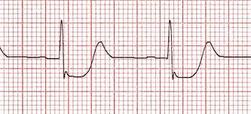 Syndrome X is the name used by cardiologists to describe patients who have typical symptoms of angina, an abnormal exercise ECG but apparantly normal unobstructed coronary arteries. The cause of the syndrome is much debated and many theories as to its aetiology abound. Most of the research focus has been on the coronary microvessels which are believed to have impaired function with an inability to dilate appropately. Clinically these vessels are difficult to assess since the microcirculation of the heart cannot be easily imaged or measured using standard investigations. Almost 50 years after the first description of Syndrome X still it remains somewhat enigmatic. Even the name suggests an element of mystery reminiscent of the "X files" used to refer unsolved cases in the popular television drama of the same name. So why and who named it Syndrome X in the first place? By the late 1960's, with the introduction of selective coronary angiography, it was becoming apparent that not all patients with angina had narrowed coronary arteries. Indeed nowerdays we recognise that ~40% of patients having a coronary angiogram will have no signficant obstruction to blood flow. In 1967 Likoff published a paper in the New England Journal of Medicine reporting "The Paradox of Normal Selective Coronary Arteriograms in Patients Considered to Have Unmistakable Coronary Heart Disease". This paper described 15 pre-menopausal women with smooth coronary arteries but typical cardiac sounding chest pain and an abnormal ECG during bicycle exercise. Once the observation was made further research was performed to try and understand the mechanisms involved. In 1973 Arbogast and Bourassa published a paper examining heart function during atrial pacing in patients with angina and normal coronary angiograms. These patients were referred to as "group X" and they were compared to people with narrowed coronary arteries who were referred to as "group C". These authors showed that rapid pacing of the heart resulted in reduction in cardiac function in patients with coronary disease but paradoxically an enhancement the patients in group X. This observation provoked much debate then and is still difficult to understand because abnormalities of heart function usually go hand-in-hand with reductions in coronary blood flow. The observations with "group X" led to the label of syndrome X being used in the accompanying editoral by Harvey Kemp to describe these patients. This spread though the medical literature and now there are over 1200 papers and articles published on cardiac syndrome X. Likoff W, Segal BL, Kasparian H. Paradox of normal selective coronary arteriograms in patients considered to have unmistakable coronary heart disease.N Engl J Med. 1967 May 11;276(19):1063-6 Arbogast R, Bourassa MG. Myocardial function during atrial pacing in patients with angina pectoris and normal coronary arteriograms. Comparison with patients having significant coronary artery disease.Am J Cardiol. 1973 Sep 7;32(3):257-63. Kemp HG Jr. Syndrome X revisited. J Am Coll Cardiol. 1991 Feb;17(2):507-8.
0 Comments
Your comment will be posted after it is approved.
Leave a Reply. |
Dr Richard BogleThe opinions expressed in this blog are strictly those of the author and should not be construed as the opinion or policy of my employers nor recommendations for your care or anyone else's. Always seek professional guidance instead. Archives
August 2023
Categories
All
|
 RSS Feed
RSS Feed

